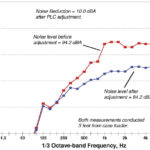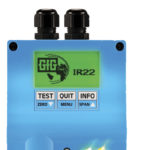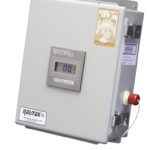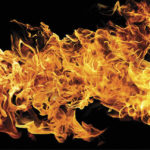Archive for May 2021
Breathing Safely: Simplifying Complex Respirator Fit Test Requirements & How Technology Can Help
By: Dave Risi, CIH, CSP, Contributor Respirators are the last line of defense between workers and harmful air contaminants, irritants and other workplace respiratory hazards. Yet, simply wearing a respirator isn’t enough. If respirators don’t fit properly, they provide little or no protection for workers. That’s why regulations like OSHA’s Respiratory Protection Standard require employers…
Read MoreCreating Eye Wellness, On and Off the Screen
By: Shelby Jenuwine, Contributor Eye injuries in the workplace are fearfully prevalent. The National Institute for Occupational Safety and Health (NIOSH) reports that every day, nearly 2,000 workers in the U.S. alone sustain job-related eye injuries that demand medical attention. Safety experts and eye doctors believe that using correct eye protection can decrease the severity…
Read MoreWays to Prevent Work-related Eye Injuries
Prevent Blindness (www.preventblindness.org) recommends the following 10 measures to preventing eye injuries at work: 1. Assess: Inspect all work areas, access routes and equipment for eye hazards. Study eye accident and injury reports. 2. Test: Uncorrected vision problems can cause accidents. Include vision testing in employee physical exams. 3. Protect: Select protective eyewear that is…
Read MoreEyes On This: Prevent Eye Injuries at the Workplace
By: Barbara Nessinger, Editor-in-Chief According to the U.S. Bureau of Labor Statistics, it is estimated that more than 2,000 people a day injure their eyes in the workplace, resulting in an average of 19,000+ lost workdays a year. In about 90% of incidents, minor to severe eye injuries and permanent vision loss could have been…
Read MoreComputer Use Guide
Protective eyewear is not required for people who spend most of their day on computers and other electronic devices. However, there are some recommended ergonomic and personal adjustments to reduce the likelihood of vision-related complaints, i.e., headaches, fatigue, tired eyes, difficulty focusing. Especially given the increase in working remotely, due to the pandemic and likely…
Read MoreMachinery Noise Control: The First Step
Before time and money are invested in implementation of noise controls, the first step should be to ensure the noise concern is not due to improper equipment setup and/or maintenance related. The recommended step here is to meet with engineering and maintenance representatives to ascertain their opinions on the matter as it relates to elevated…
Read MoreGoing Mobile: Next Frontier in Employee Safety
By: Ben Kanner, Contributor Mobile device use is now ubiquitous in the working world, allowing everyone to stay connected, whether employees are at home or on-site. This is especially important for those on the frontlines. According to a report by IDC, frontline workers account for 57% of American workers. They are continuously on the move—loading…
Read MoreAtmospheric Hazards at Commercial Cannabis Grower & Processor Facilities
By: Paula Shovels, Contributor The use and possession of cannabis is still officially illegal under federal law. The Controlled Substances Act of 1970 lists cannabis as a Schedule I drug, which prohibits even medical use. However, at the state and local level, it is a different story. The laws in many states are increasingly at variance…
Read MoreFunctional Redundancy: The Ticket for Fire Detection
Functional redundancy (FR) is essential for reliably and quickly detecting fires By: Albert E. Ketler, Contributor Carbon monoxide (CO) sensors on 1,000ft centers are used in U.S. coal mines for “early detection” of conveyor belt fires caused by bearings overheating, electrical arcs or spontaneous combustion of coal dust. Temperature detection was phased out decades ago…
Read MoreIs the IH Respiratory Hazard also an Explosion Risk?
By: Mark Yukich & Ashok Ghose Dastidar, Contributors As a professional, the importance of identifying respirable industrial hygiene hazards and taking the steps necessary in reducing the amount of exposure to encourage a safe atmosphere for workers is vitally important. However, when tasked with reducing respirable dust hazards within a facility’s process, it is recommended…
Read More











